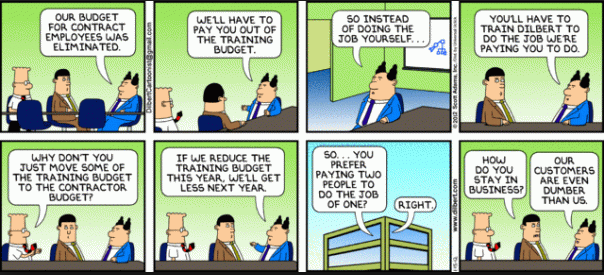Beyond Budgeting… A journey towards real customer service
18/07/2017


Over the past two years or so, a fellow Visiting Fellow – Steve Morlidge – has been introducing me to the term and benefits of “Beyond Budgeting”. This has provided one major “Ah-ha! Moment”. It also chimes with work we have done with Cranfield in developing what we call a “Systems Approach to Project Management” (more of that in a later blog).
Budgeting and Project Planning (particularly large projects) have a lot in common, four of which are:
- They lay out some form of forecast of revenue, costs, profit based on last year’s results plus expectations of stakeholders on the one hand, and on the other forecast of timeframe and spend, along with projected benefits both based on certain assumptions
- Both the Budget and the Project Plan assume that nothing changes in the system (e.g. the environment, markets, technology etc.) and that expectations and requirements remain cast in concrete over the life-time of the budget or the plan
- They are then used by the executive team to track, on the one hand, how revenue, costs and profit are varying (i.e. variance) from budget (like the budget was God-given and correct), and on the other how deliverables are being delivered along with consumption of effort, materials etc. (cost), and projected expenditure to completion against the project plan (like it was God-given and correct)
- By locking-in the budget or project plan in this way (where it is immoveable) THE ONLY PARAMETER YOU CAN ADJUST IS personal (or team) performance – and hence we get into the perversions of personal (or team) incentives and rewards! My Ah-ha! moment (many thanks Steve!)
So the crux to Beyond Budgeting (as well as Planning) is to accept that:
- Assumptions made may be wrong or change
- The world-system and expectations/requirements may change – particularly as budgets and plans span timeframes typically far longer than the timeframes in which the environment/requirements change
- That in budgeting and planning we, as humans (see Daniel Kahneman, Thinking Fast & Slow) always have an optimism bias
And the crux is that in order to be “agile” or “responsive” (as all the big four consulting firms are telling us we need to be IN ORDER TO STAY IN BUSINESS) we can only do so if budgeting and planning functions accept the above.
So how do you track progress in this moving feast – next blog…
Categories & Tags:
Leave a comment on this post:
You might also like…
My Apprenticeship Journey – Broadening Horizons
Laura, Senior Systems Engineer at a leading aircraft manufacturing company, joined Cranfield on the Systems Engineering Master’s Apprenticeship after initially considering taking a year off from her role to complete an MSc. Apprenticeship over MSc? ...
The Library app is back!
The Library app is back! It's exactly the same as before (although it will get a fresh look in a few months) and if you hadn't removed it from an existing device it should just ...
PhD researcher at the IF Oxford Science and Ideas Festival
IF Oxford is a science and ideas Festival packed with inspiring, entertaining and immersive events for people all ages. PhD researcher, Zahra attended the festival. Here she shares what motivated her to get involved. ...
What leadership skills are required to meet the demands of digitalisation?
Digital ecosystems are shifting the dynamics of the world as we know it. With digitalisation being a norm in the software industry, there is currently a rapid rise in its translation ...
My PhD experience within the Centre for Air Transport at Cranfield University
Mengyuan began her PhD in the Centre for Air Transport in October 2022. She recently shared what she is working on and how she has found studying at Cranfield University so ...
In the tyre tracks of the Edwardian geologists
In April 1905 a group of amateur geologists loaded their cumbersome bicycles on to a north-bound train at a London rail station and set off for Bedfordshire on a field excursion. In March 2024 a ...






